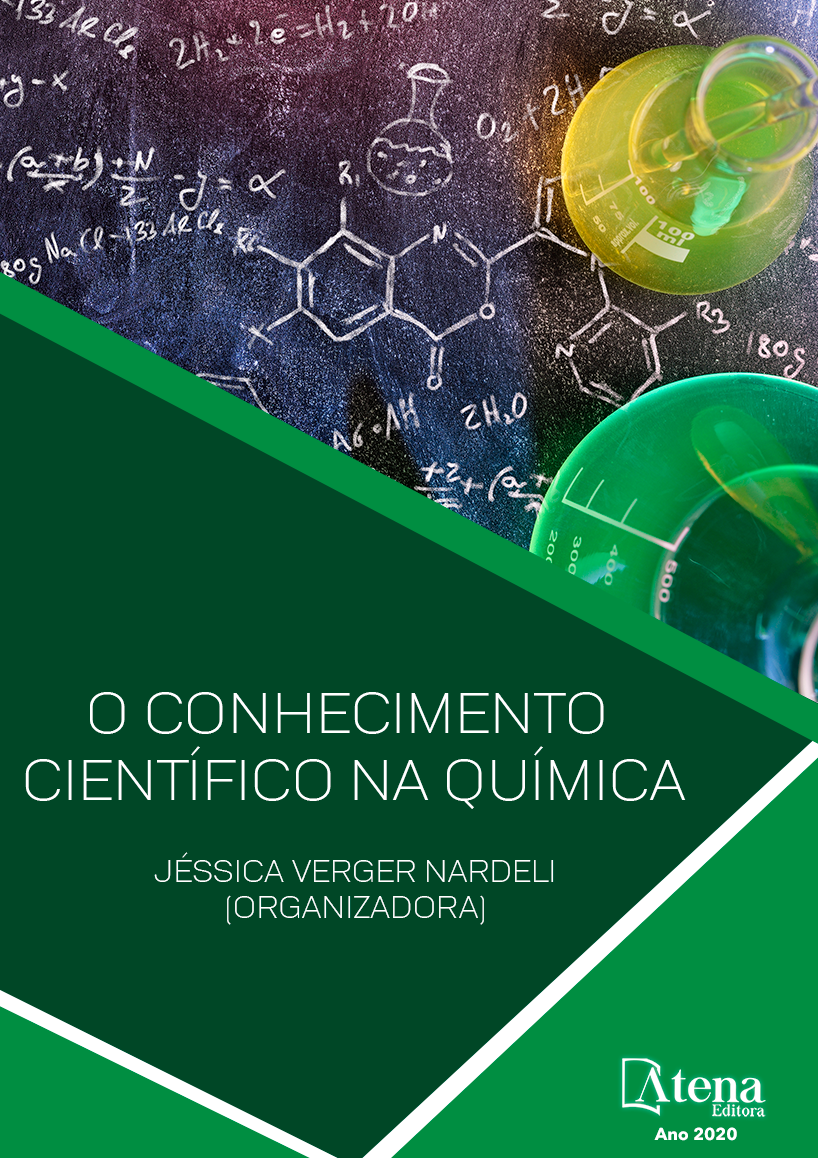
OBTENÇÃO DE CRISTAIS DE ALÚMEN DE CROMO E POTÁSSIO, TRATAMENTO DOS RESÍDUOS DE Cr(VI) E SUA REUTILIZAÇÃO NA ESMALTAÇÃO DE CERÂMICAS COMO PROPOSTA DE EXPERIMENTO NA GRADUAÇÃO.
Os compostos de cromo são usados em muitos processos industrias e agrícolas, e em especial, os compostos de Cr(VI), apresentam alta toxicidade aos seres vivos, onde a sua facilidade de difundir na membrana celular e modificar a transcrição da molécula de DNA podem ocasionar efeitos carcinogênicos e mutagênicos. Desta forma, o monitoramento e tratamento desses resíduos é de fundamental importância, como a redução do Cr(VI) em Cr(III) que é mais estável, de menor mobilidade, considerado micronutriente, participando de rotas metabólicas de glicose, lipídeos e proteínas no organismo humano. Neste trabalho é apresentado uma metodologia de tratamento dos resíduos de Cr(VI) derivados da síntese do alúmen de cromo e potássio produzidos durante a aula experimental da disciplina de Química Inorgânica Experimental da Universidade Federal de Santa Catarina – UFSC Blumenau. O tratamento consiste em reduzir os resíduos de Cr(VI) em Óxido de Cromo (III), denominado “verde de cromo”, e utiliza-lo na pigmentação de peças cerâmicas. As peças em argila são produzidas e pigmentadas com tintura a base do óxido pelos próprios alunos e transformadas em peças cerâmicas após cozimento em forno a 800 °C. Através deste trabalho os estudantes podem aprimorar suas técnicas de laboratório, aprofundar seus conhecimentos sobre o tema, além de realizar o tratamento dos rejeitos gerados através de sua reutilização na esmaltação de peças cerâmicas.
OBTENÇÃO DE CRISTAIS DE ALÚMEN DE CROMO E POTÁSSIO, TRATAMENTO DOS RESÍDUOS DE Cr(VI) E SUA REUTILIZAÇÃO NA ESMALTAÇÃO DE CERÂMICAS COMO PROPOSTA DE EXPERIMENTO NA GRADUAÇÃO.
-
DOI: 10.22533/at.ed.8672002049
-
Palavras-chave: Alúmen de cromo e potássio; reutilização; Cr2O3; esmaltação de cerâmicas.
-
Keywords: Chromium and potassium alum; reuse; Cr2O3; enamel ceramic
-
Abstract:
Chromium compounds are used in many industrial and agricultural processes, and in particular Cr (VI) compounds have high toxicity to living beings, where their ease of diffusing into the cell membrane and modifying transcription of the DNA molecule may cause carcinogenic and mutagenic effects. Thus, the monitoring and treatment of these residues is of fundamental importance, as the reduction of Cr (VI) in Cr (III) is more stable, less mobile, considered micronutrient, participating in metabolic pathways of glucose, lipids and proteins in the human organism. This work presents a methodology for the treatment of Cr (VI) residues derived from the synthesis of chromium and potassium alum produced during the experimental class of Experimental Inorganic Chemistry of the Universidade Federal de Santa Catarina - UFSC Blumenau. The treatment consists in reducing the residues of Cr (VI) in Chromium (III) Oxide, called “chromium green”, and use it in the pigmentation of ceramic pieces. The clay pieces are produced and pigmented with oxide dye by the students themselves and turned into ceramic pieces after baking at 800 ° C. Through this work students can improve their laboratory techniques, deepen their knowledge on the subject, and perform the treatment of tailings generated through their reuse in the enamelling of ceramic pieces.
-
Número de páginas: 8
- Yara Karolini Cirilo
- Alfredo Alberto Muxel


